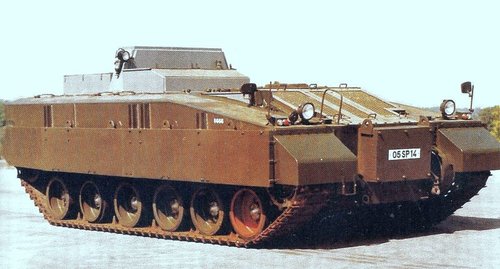From Sealordlawrence's post on MBT-80
I would add that at this point the British Army was also scheming 1,900 MICV's (which were originally meant to have Chobham armour and a 750hp engine with a total weight of 30 tons). MBT-80 was apparently cancelled in July 1980, it seems that prior to this (1979) it had been decided to use the Rolls Royce Motors C12 in a 1,500 hp configuration having beaten out the US AGT1500 gas turbine. The intention was for a power to weight ratio of 27bhp/t (weight of 55 tons. It had also been settled on a rifled 120mm gun.
Does anyone have any of the possible configurations for the MICV?
I recall a Panoroma type programme discussing the choice of armour for the MICV which questioned not using Chobham type armour and IIRC, this showed something more like a standard APC without a turret.
I would add that at this point the British Army was also scheming 1,900 MICV's (which were originally meant to have Chobham armour and a 750hp engine with a total weight of 30 tons). MBT-80 was apparently cancelled in July 1980, it seems that prior to this (1979) it had been decided to use the Rolls Royce Motors C12 in a 1,500 hp configuration having beaten out the US AGT1500 gas turbine. The intention was for a power to weight ratio of 27bhp/t (weight of 55 tons. It had also been settled on a rifled 120mm gun.
Does anyone have any of the possible configurations for the MICV?
I recall a Panoroma type programme discussing the choice of armour for the MICV which questioned not using Chobham type armour and IIRC, this showed something more like a standard APC without a turret.










